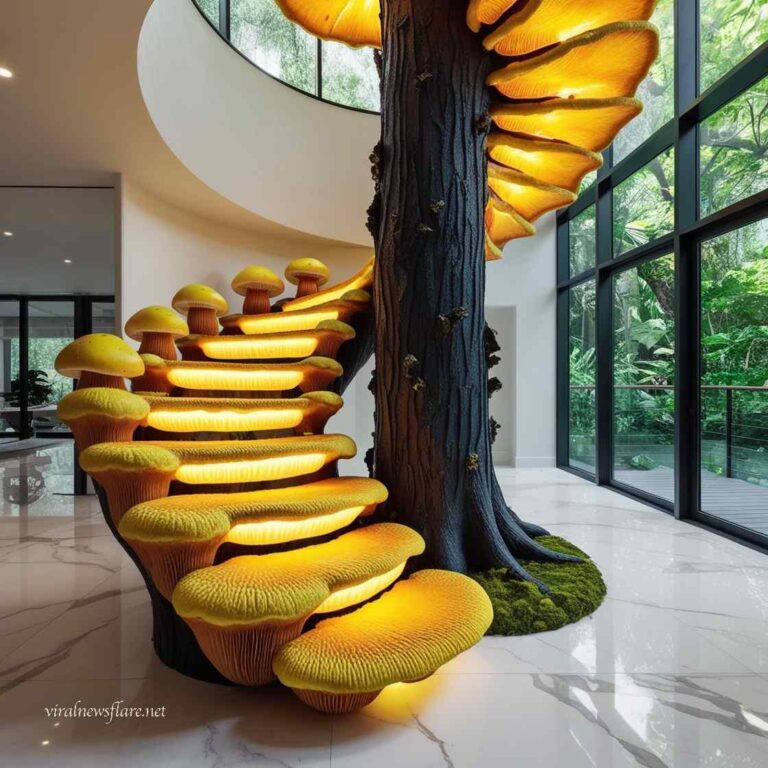In the realm of interior design and architectural innovation, nothing quite captures the imagination like a door that evokes the enchantment of the natural world and the charm of age-old fairytales. As homeowners seek unique features that blend storytelling with functionality, one architectural element rises above the rest: the Tree Shaped Doorway. This article delves deeply into the whimsical allure of this design, exploring its history, symbolism, construction intricacies, and how it transforms a home into a living fairytale. From the first glimpse of carved wood resembling gnarled branches to the final touch of green moss, the Tree Shaped Doorway is more than just an entrance—it’s a portal to wonder.
Embracing the Magic of a Tree Shaped Doorway
Envision stepping through a doorway that seems to have grown organically from the heart of a forest, its arching branches forming a natural frame that invites you into a space where magic and reality blur. The Tree Shaped Doorway is a design element that does more than just welcome you home; it sets the tone for an entire living space steeped in the mystique of a fairytale. This enchanting feature taps into a deep-rooted human fascination with nature and the stories that have been passed down through generations. Trees have long been symbols of wisdom, growth, and transformation, and when that symbolism is woven into the very fabric of a home’s entrance, the effect is nothing short of spellbinding.
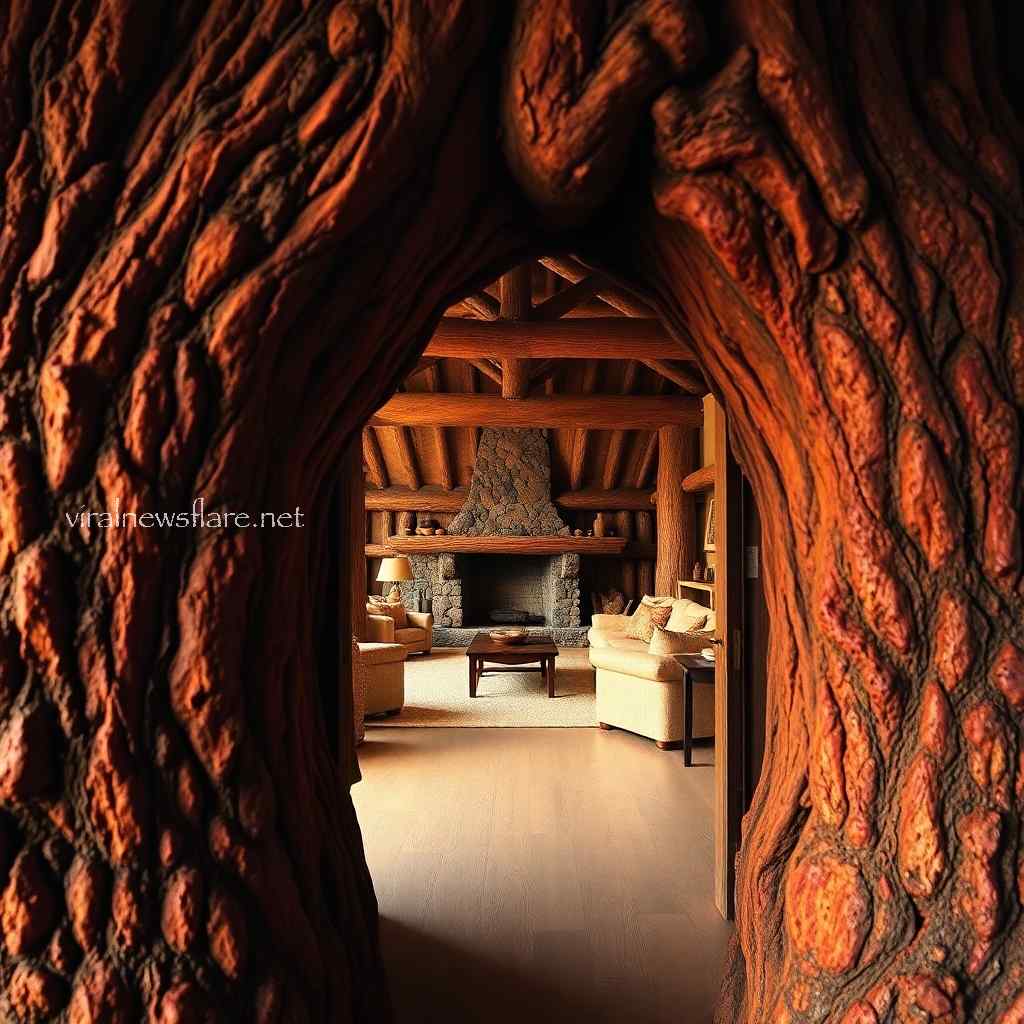
For many, childhood dreams included secret gardens, enchanted forests, and mythical adventures. These fantasies often centered around the concept of entering a new world through an unassuming gateway. The Tree Shaped Doorway captures this essence perfectly, transforming an ordinary entry into an extraordinary experience. It not only serves as a physical passageway but also as a symbolic journey from the mundane into a world where imagination reigns supreme. This doorway invites residents and guests alike to shed their inhibitions and step into a space where the boundary between reality and fantasy is delightfully blurred.
Every curve, knot, and branch in a Tree Shaped Doorway tells a story. The craftsmanship involved in designing such a piece is a dance between art and nature, merging human creativity with organic forms. This doorway evokes a sense of timelessness, connecting the present with ancient myths and legends. It encourages us to pause, to admire the artful interplay of light and shadow through its carved leaves, and to reflect on the enduring beauty and wisdom of trees. Such a feature, when incorporated into a fairytale-themed home, does not just accentuate the aesthetic; it becomes the heart of the home, a living piece of art that invites wonder at every glance.
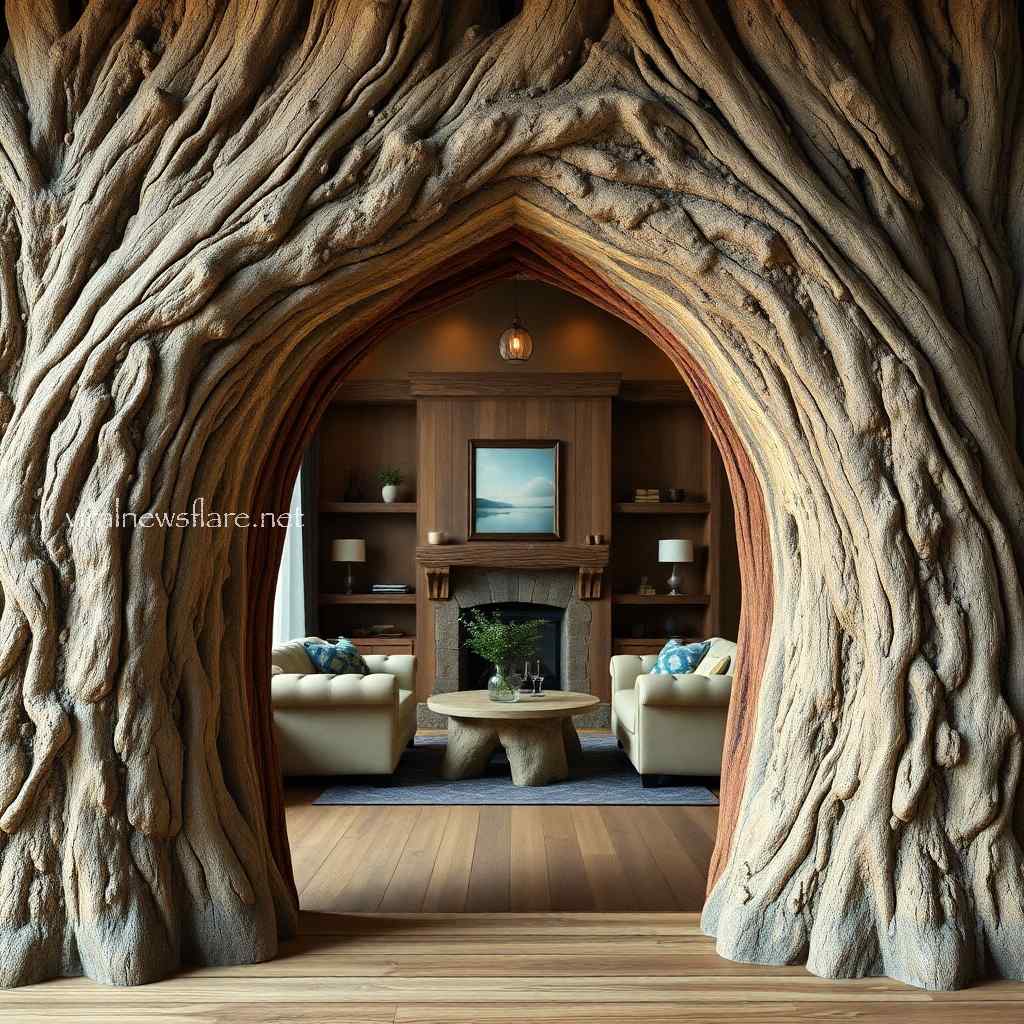
The History and Symbolism Behind the Tree Shaped Doorway
Throughout history, trees have been central to many cultures and mythologies, often regarded as sacred, mystical beings that bridge the earthly and the divine. This reverence for trees finds natural expression in architecture through elements like the Tree Shaped Doorway. In ancient lore, trees symbolized life, growth, and connection to the cosmos. For example, the Norse myth of Yggdrasil, the World Tree, serves as a cosmic axis connecting different realms, embodying wisdom and the cycles of life. A doorway shaped like a tree channels this symbolism, serving as both a literal and figurative gateway that ushers one from one space—or state of mind—into another.
In medieval times, architecture often incorporated organic motifs that drew from the natural world, reflecting a reverence for nature and the divine. Ornate carvings and intricate woodwork mirrored leaves, vines, and branches, celebrating the beauty of trees and their importance to human life. These artistic touches transformed common structures into magical experiences, where every detail spoke of a world beyond the ordinary. The Tree Shaped Doorway can be seen as a modern continuation of this tradition, blending ancient symbolism with contemporary design to create an entrance that is both familiar and otherworldly.

The design of a Tree Shaped Doorway often incorporates elements that mirror the growth rings of a tree, the rough texture of bark, and the graceful arching of branches. These details are not merely decorative; they carry deep meanings. The arch can symbolize the cyclical nature of life, the entrance into a new phase, or a transformation of perspective. The natural asymmetry of a tree-inspired design speaks to the beauty found in imperfection, echoing the organic randomness of the natural world. This organic form invites introspection, a slow and deliberate connection with nature, encouraging us to appreciate the journey rather than just the destination.
In a fairytale setting, the Tree Shaped Doorway becomes the threshold between worlds. It is the portal that separates the familiar from the fantastical, the ordinary from the enchanted. Each time someone approaches such a doorway, they are reminded of timeless narratives where trees served as guards to hidden realms, where magical beings lived among the branches, and where every path led to adventure. This doorway does not simply mark a transition between the indoors and outdoors but invites a journey into a realm of dreams, where every moment feels like a page out of a beloved storybook.
Design and Construction of a Tree Shaped Doorway
Creating a Tree Shaped Doorway requires both artistic vision and skilled craftsmanship. It is a process that marries the raw beauty of nature with the precision of human engineering. The first step in conceptualizing this entrance is to study various tree species, their forms, and the unique patterns of their bark. Designers often draw inspiration from ancient oak trees with their gnarled branches, cherry blossoms with delicate petals, or towering redwoods that evoke strength and majesty. The chosen tree influences the overall mood and aesthetic of the doorway, setting the tone for the entire space it introduces.
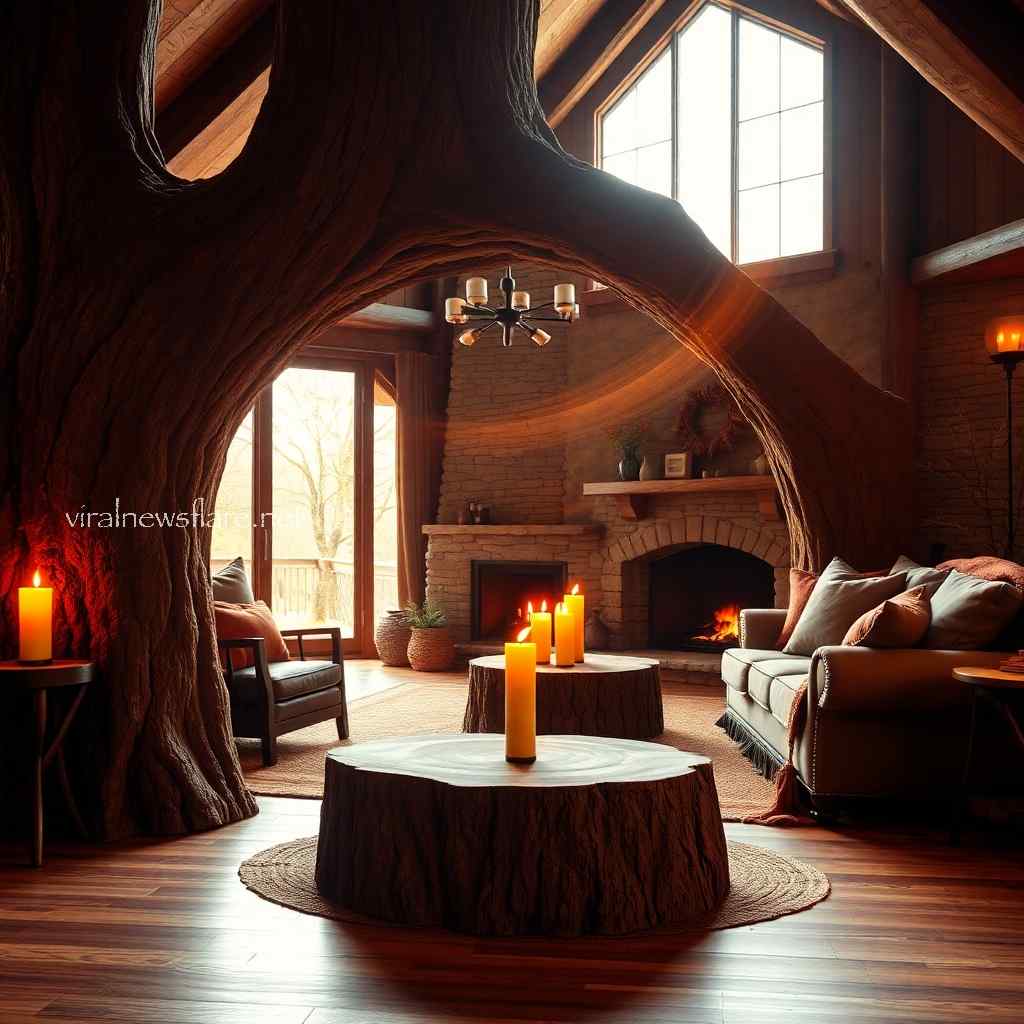
The construction of a Tree Shaped Doorway begins with selecting the right materials. Traditional approaches might involve hand-carved wood, using timber that has been carefully sourced to ensure sustainability and authenticity. The wood is chosen not only for its structural integrity but for the natural grain, knots, and texture that can enhance the tree-like appearance. Advanced designs may blend wood with other materials such as stone, glass, or metal to add complexity and depth. For instance, stained glass can mimic the dappled light filtering through leaves, while wrought iron can be twisted into branch-like patterns, adding an element of fantasy and durability.
Craftsmen then begin the meticulous process of shaping the doorway. Each curve and contour is carved with precision, replicating the organic flow of a tree. The arches of the doorway might mimic the natural bend of a branch, creating a gentle, welcoming curve. Leaves and foliage motifs can be carved into the frame, or even integrated with living plants to enhance the effect of a living tree. Techniques such as repoussé (shaping metal by hammering) or wood carving may be employed to create intricate patterns that catch the eye and draw the viewer into a world of fantasy.
Lighting plays a crucial role in enhancing the magical aura of a Tree Shaped Doorway. Soft, ambient lighting can be integrated into the branches, either through hidden LED lights or carefully placed lanterns, to simulate the play of sunlight filtering through a canopy. This gentle illumination not only highlights the craftsmanship but also creates an inviting glow that beckons visitors to step through the portal. The interplay of light and shadow against the textured surface of the doorway adds an element of dynamic beauty, with each passing moment offering a slightly different visual experience, much like the ever-changing scene in a forest.
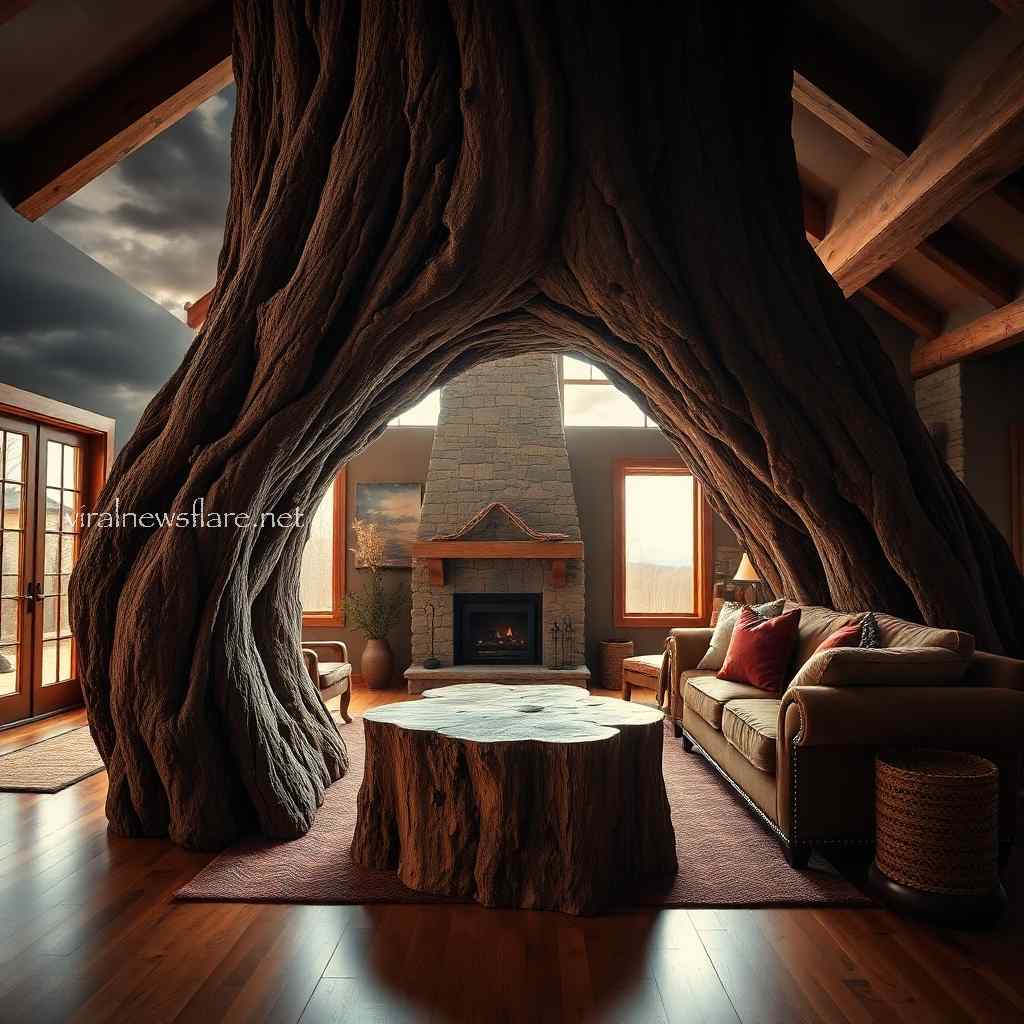
When constructing a Tree Shaped Doorway, consideration must be given to the overall architecture of the home. The doorway should not feel like an isolated piece but rather an integrated feature that complements the surrounding walls, windows, and rooflines. Materials and colors used in adjacent areas should harmonize with the natural theme—think earthy tones, rich greens, and rustic textures. This creates a seamless transition from the exterior world of trees and forests into the interior space, blurring the boundaries between inside and outside. The goal is to create an immersive environment where the Tree Shaped Doorway acts as a bridge between reality and fantasy, a true entryway into a fairytale world.
Integrating the Tree Shaped Doorway Into Home Decor
The enchantment of a Tree Shaped Doorway extends far beyond its physical structure. It influences the entire aesthetic and ambiance of a home, serving as the cornerstone of a fairytale-themed design. To create a cohesive narrative, it is essential to integrate surrounding decor elements that complement and enhance the magical feel of the doorway.
One way to achieve this is by selecting natural materials and earth-toned color palettes throughout the home. Furniture crafted from reclaimed wood, stone, or wrought iron echoes the organic theme and reinforces the connection to nature. Soft, ambient lighting, reminiscent of fireflies or the gentle glow of lanterns, can be used to enhance the mystical atmosphere around the doorway. Textiles and fabrics in rich greens, earthy browns, and deep golds can evoke the feeling of a lush forest or a regal woodland setting. These choices create an immersive environment where every detail echoes the theme initiated by the Tree Shaped Doorway.
Decorative elements such as carved wooden sculptures, leaf-shaped wall hangings, and paintings of enchanted forests can be strategically placed to reinforce the fairytale theme. For example, a large mirror framed with entwined branches and leaves can reflect the beauty of the doorway, doubling its impact and creating an illusion of depth. Accents like crystal chandeliers, chandeliers made of natural vines, or fairy lights draped across the ceiling can further enhance the ethereal atmosphere, making every corner of the home feel like part of a larger enchanted forest.
Integrating living plants into the design around the Tree Shaped Doorway can also create a seamless blend between the built environment and nature. Climbing vines that wrap around the frame, potted ferns at the entrance, or a small indoor tree placed nearby can add life and vibrancy, making the transition from outside world to indoors feel like stepping deeper into a magical realm. The scent of fresh pine or jasmine diffused near the doorway can further stir the senses, evoking the smells of a woodland glade and enhancing the immersive experience.
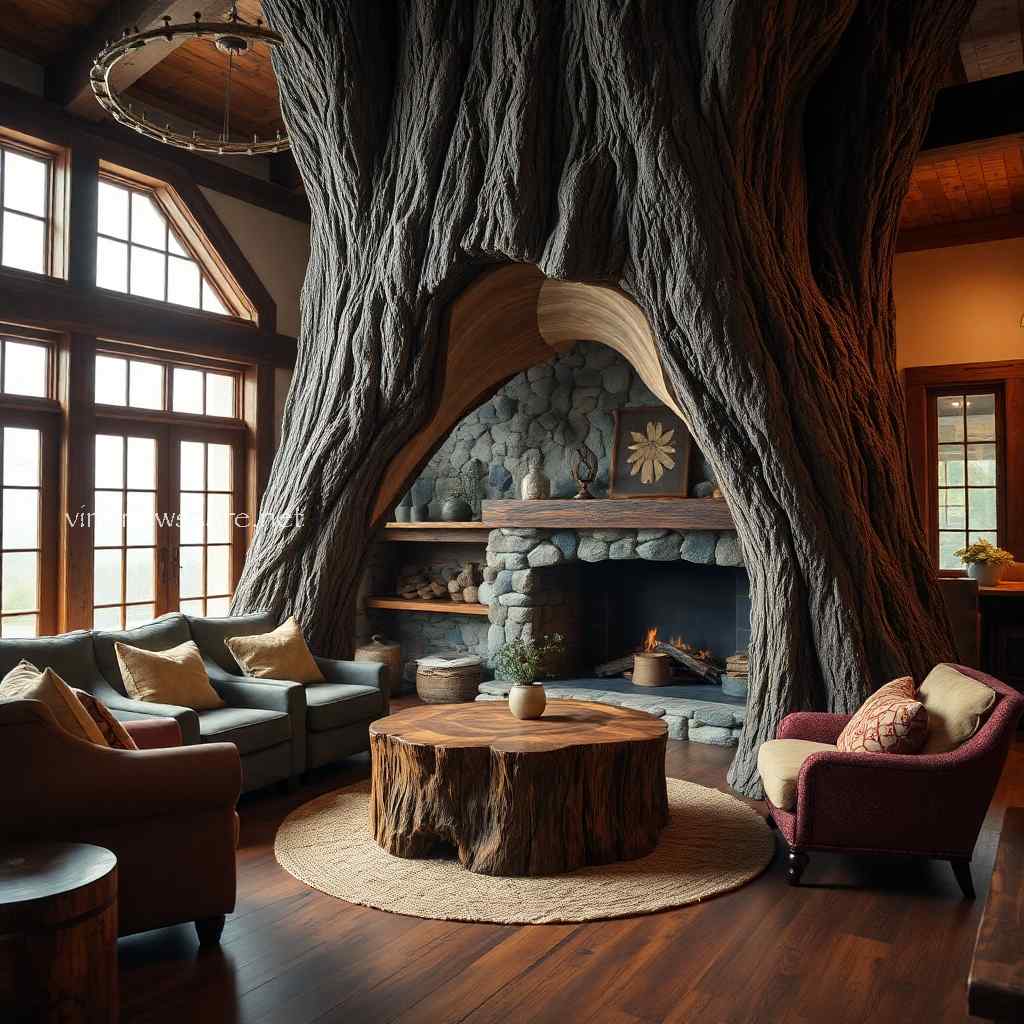
When styling a space with a Tree Shaped Doorway, balance is key. The doorway is a focal point, so surrounding decor should complement rather than compete with its majesty. The fairytale theme should be woven subtly through the space, with hints of whimsy in unexpected places—a cushion with embroidered vines, a table carved to resemble intertwining branches, or a bookshelf designed like a hollowed-out tree trunk. These details tie the narrative together, making the entire home feel like a cohesive extension of the enchanted entryway.
The Cultural Impact and Stories Behind Tree Shaped Doorways
Stories of magical doorways leading to other realms can be found in cultures across the globe. The Tree Shaped Doorway taps into this rich tapestry of folklore, serving as a modern incarnation of ancient portals that guarded sacred groves and secret worlds. In European folktales, enchanted forests often contain hidden doorways disguised as trees, leading to realms where fairies danced and magical creatures roamed. These myths capture the imagination, teaching lessons about bravery, curiosity, and the beauty of nature. By incorporating a Tree Shaped Doorway into a home, one is not merely adding a decorative feature but inviting a piece of that timeless narrative into everyday life.
Homeowners who have embraced this design often share stories of how the doorway has transformed their living space into a place of wonder and inspiration. Guests may find themselves lingering at the threshold, drawn into conversations about the craftsmanship and the enchanting world it suggests. Children, in particular, may see the doorway as a magical portal where adventures await, sparking creativity and a sense of exploration. Parents cherish the way it brings a sense of whimsy and nostalgia into the home, reminding them of childhood fantasies and fairy tale stories read by the fireside.
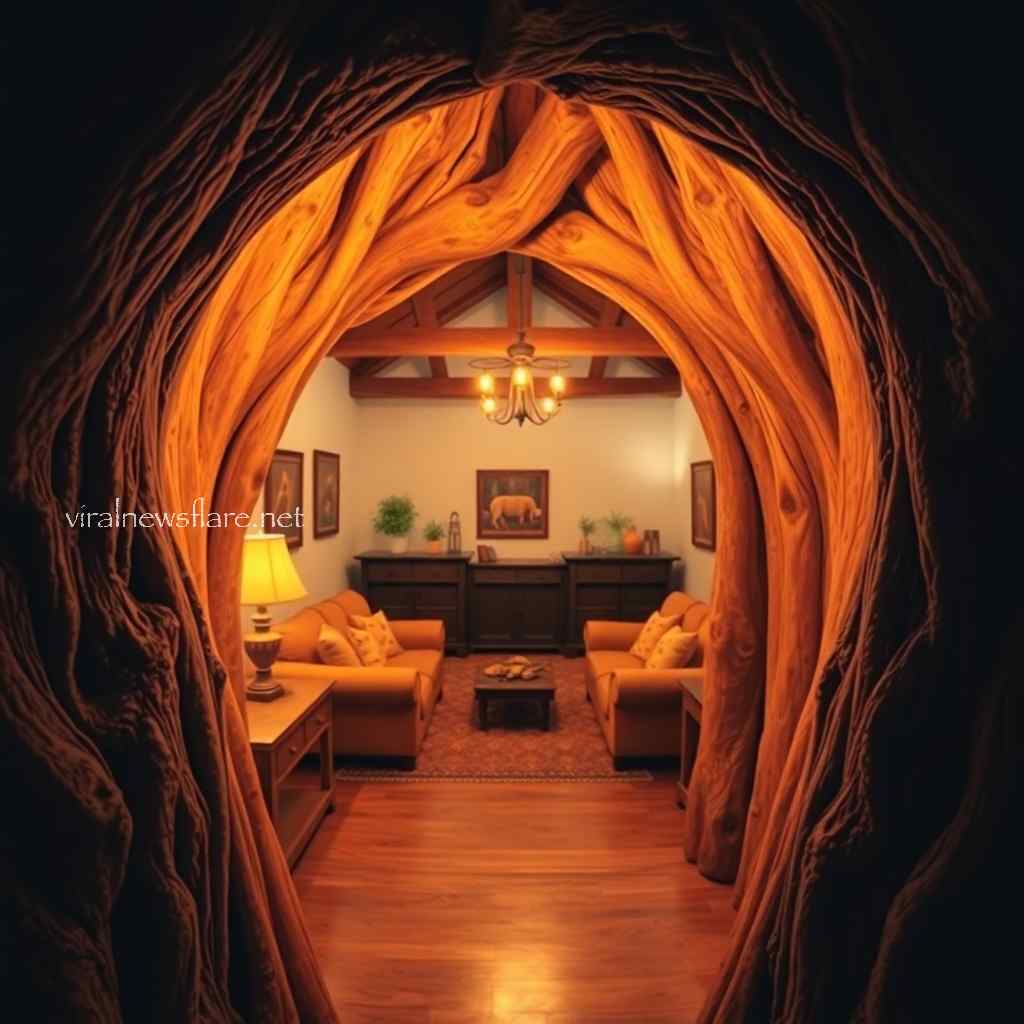
This cultural resonance is not only confined to aesthetics but extends to community and tradition. Some neighborhoods have become known for their fairytale-themed houses, where each home features unique elements that tell a collective story. The Tree Shaped Doorway can serve as a landmark within such a community, a beacon of creativity and a symbol of the residents’ commitment to preserving and celebrating the beauty of folklore and nature. Such doorways become conversation starters, connecting strangers through shared experiences of magic and wonder, and fostering a sense of community rooted in the collective appreciation for art and storytelling.
Design Tips and Ideas for Creating Your Own Tree Shaped Doorway
If you’re inspired by the idea of incorporating a Tree Shaped Doorway into your own home, there are several practical tips and ideas to consider. Begin by researching various tree species and the architectural styles that resonate with your personal taste. Whether you lean towards the rustic charm of an oak or the delicate intricacies of cherry blossoms, your choice should reflect the mood you wish to set for your home. Sketch out designs, consult with skilled artisans who specialize in custom woodwork or metalwork, and explore options for sustainable materials to ensure your project is both beautiful and eco-friendly.
Plan the location of your Tree Shaped Doorway carefully. It should serve as a gateway not just to a room but to an experience. Consider how natural light interacts with the doorway throughout the day—morning sunlight filtering through leafy carvings can cast magical shadows, while twilight may give the doorway an even more mysterious aura. Experiment with reflective surfaces nearby that catch and play with the ambient light, enhancing the magical effect. The placement of the doorway should feel organic, almost as if it were a natural part of the landscape, seamlessly bridging the gap between interior and exterior environments.
Work closely with designers and craftsmen who understand the fairytale aesthetic. Communicate your vision clearly, providing mood boards, color palettes, and references to folklore and art that inspire you. This collaboration will ensure that every detail—from the curvature of the branches to the texture of the bark—resonates with authenticity and whimsy. Seek out artisans who use techniques such as hand-carving, metalworking, and stained glass creation, as these methods imbue the doorway with a handcrafted, artisanal quality that mass-produced features often lack.
To complement a Tree Shaped Doorway, consider landscaping elements outside the home that echo its design. Planting trees or shrubs that frame the entrance, creating a natural arbor or canopy over the doorway, and integrating water features like a small fountain or stream can enhance the overall fairytale atmosphere. Pathways lined with moss, stones, or whimsical sculptures leading up to the doorway set the stage for an enchanting arrival, inviting guests to leave behind the ordinary world and step into a realm of magic.
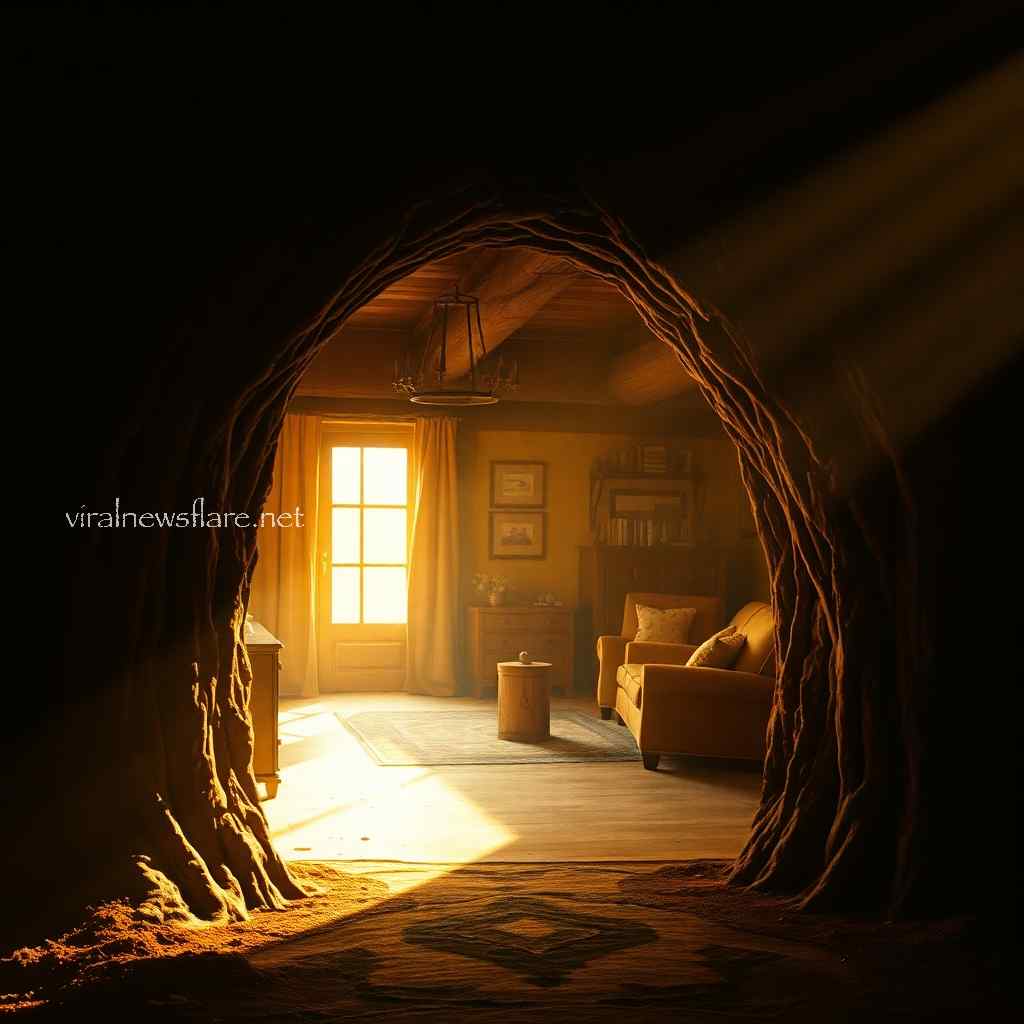
Creating a Fairytale Landscape Around Your Tree Shaped Doorway
While the doorway itself is a work of art, the environment around it can elevate the magical experience even further. Imagine approaching your home through a winding path nestled among ancient trees, with dappled sunlight filtering through leaves, leading to the enchanting presence of a Tree Shaped Doorway. This immersive journey primes the visitor for the wonder that lies beyond the threshold. Landscape design around such a feature should complement the doorway and continue the narrative of living within a fairytale.
Natural stone, winding footpaths, and hidden nooks filled with fairy lights can create a seamless transition from the outside world into the heart of a fairytale-themed home. Consider installing benches that look like fallen logs, whimsical garden sculptures, and water features such as trickling streams or small ponds that reflect the magical doorway. The sounds of nature—birdsong, rustling leaves, or the gentle splash of water—enhance the immersive quality of the space, making the approach to the Tree Shaped Doorway as enchanting as the doorway itself.
Using organic materials like wood, stone, and metal in both the doorway and its surroundings blurs the line between built environment and nature. Garden beds shaped like miniature forests, pergolas draped in ivy, and trellises that mimic the twisting branches of trees can extend the fairytale theme beyond the doorstep. By thoughtfully curating every detail, from the pattern of stepping stones to the type of flowers planted near the entrance, you create a holistic experience where the Tree Shaped Doorway serves as the focal point of a magical landscape.
The Tree Shaped Doorway is more than a mere architectural feature—it is a gateway to an enchanting world where nature and fantasy intertwine, transforming a house into a fairytale-themed home. It celebrates the timeless beauty and symbolism of trees, offers a unique opportunity for creative expression, and invites residents and visitors alike to step into a realm of wonder and magic. By thoughtfully designing and integrating this extraordinary doorway, you not only elevate the aesthetic appeal of your home but also create a space that inspires the imagination, fosters a deep connection with nature, and brings the timeless charm of fairytales into everyday life.
